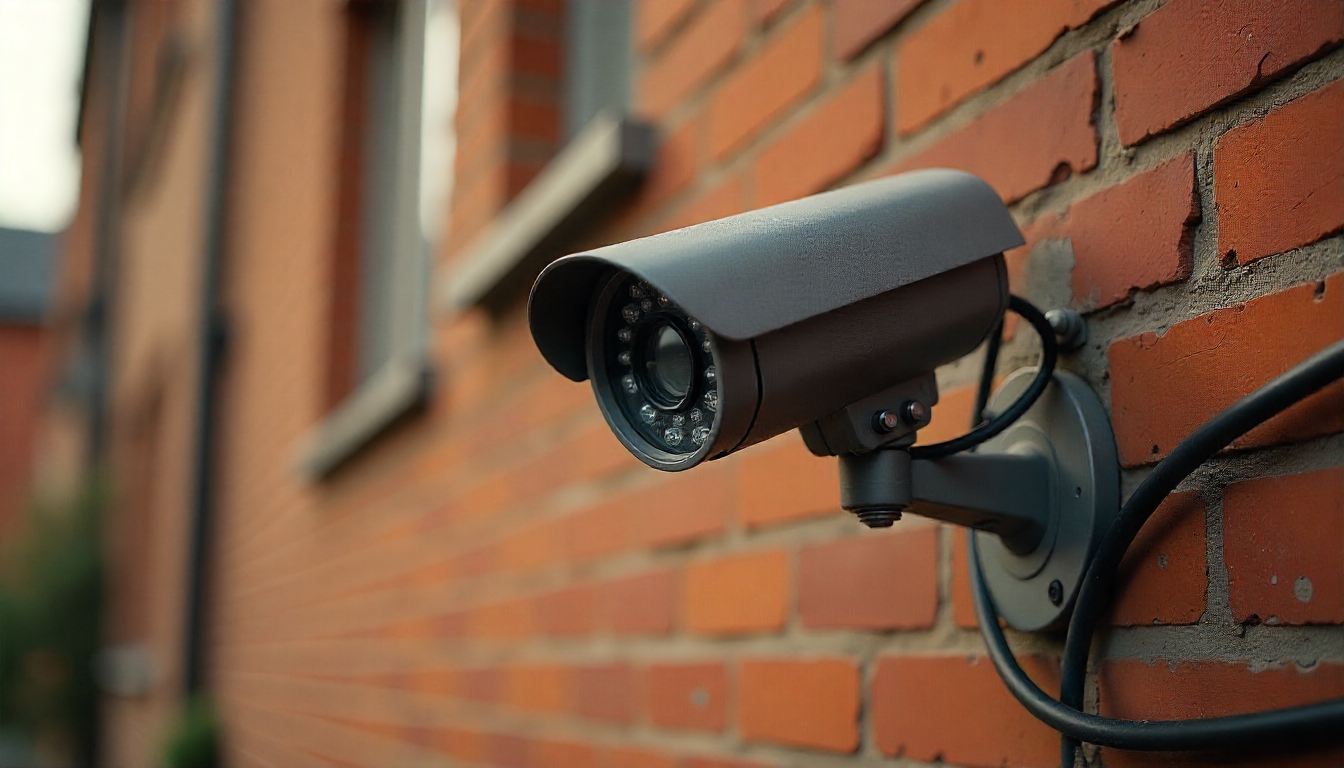CCTV cameras can make a big difference to security for homes and small businesses in the UAE, but only if they are installed and used in the right way. Many property owners invest in good equipment and still do not get the protection they expected. The problem is rarely the idea of CCTV itself; it is more often about planning, placement, settings, and maintenance.
A rushed installation, a random choice of camera locations, or incomplete setup can leave blind spots, useless footage, and frustration when an incident happens. Understanding the most common mistakes helps you avoid them and get real value from your system. Instead of treating CCTV as just another device on the wall, it is better to see it as part of a carefully thought-out security plan.
This article explains the typical errors people make when installing CCTV cameras in the UAE and how to avoid them, so your system works effectively when you need it most.
Failing to Plan Camera Coverage Properly
One of the biggest mistakes is installing cameras without a clear plan. Many people simply place cameras where it looks convenient or where a cable can easily reach, instead of thinking about what really needs to be seen.
Without proper planning, you may end up with:
- Blind spots where intruders can move without being recorded
- Overlapping views that waste coverage on the same area
- Cameras that focus on low-risk spaces while ignoring key entrances
Before installation, it helps to walk around the property and identify all important points, such as doors, windows, gates, driveways, corridors, and storage areas. From there, you can decide which cameras should cover which areas, at what angle, and from what height.
A simple sketch of the site, even on paper, can help visualise coverage and reduce the risk of missing critical zones.
Choosing the Wrong Camera Type for the Location
Not all cameras are the same, and using the wrong type in a specific spot is another common problem. For example, a narrow driveway may need a camera with a focused view, while a large shop floor may require a wider angle. Indoor cameras used outside, or cameras without proper protection in harsh conditions, can fail quickly.
Common mismatches include:
- Indoor cameras installed outdoors, exposed to heat and dust
- Wide-angle cameras used to read number plates at long distances
- Cameras without night vision placed in dark areas
- Large cameras placed in sensitive indoor areas where a discreet device is better
In the UAE, outdoor cameras must be able to withstand strong sunlight, high temperatures, and dust. Meanwhile, indoor areas such as living rooms, corridors, and reception areas benefit from compact designs that do not make people feel uncomfortable.
Matching camera type, lens, and housing to each location improves performance and lifespan.
Ignoring Lighting Conditions and Reflections
Lighting plays a major role in how useful CCTV footage will be. A camera facing directly into strong sunlight, a bright window, or a reflective surface can produce images that are too dark, too bright, or washed out. At night, weak lighting or overly bright lights in the wrong place can also cause problems.
Common lighting mistakes include:
- Placing cameras facing open glass doors or windows with strong backlight
- Mounting cameras where car headlights shine directly into the lens
- Relying completely on streetlights that do not evenly cover the area
- Forgetting how shadows change at different times of day
To avoid these issues, it is important to:
- Test camera views in the morning, afternoon, and night
- Adjust angles so that cameras look slightly down instead of straight into bright light
- Use cameras with features that handle high contrast scenes, where needed
- Add or adjust lighting to support clearer images at night
Taking a little time to check the view under real conditions can make a big difference to the quality of recordings.
Neglecting Network and Storage Requirements
Many modern CCTV systems rely on network connections and digital storage. A common mistake is underestimating how much internet bandwidth and recording space are needed, especially for high-resolution cameras.
Problems that often appear later include:
- Slow or unstable remote viewing because of limited bandwidth
- Storage devices filling up too quickly and overwriting important footage
- Poor recording quality because settings were lowered to save space
Before installing a system, it is important to consider:
- How many cameras will be used, and at what resolution
- How long you want to keep recordings before they are overwritten
- Whether remote viewing will be used frequently
- The reliability of the internet connection at the site
Balancing resolution, frame rate, and recording modes (continuous vs motion-based) helps manage storage while still keeping the level of detail you need.
Many property owners in the UAE prefer working with a structured provider like wiznet so these technical details are calculated and configured correctly from the start rather than being discovered only after a problem occurs.
Poor Positioning and Mounting of Cameras
Even high-quality cameras will not perform well if they are positioned or mounted poorly. A camera installed too high may capture only the tops of heads. A camera mounted too low may be easily tampered with. A slight tilt in the wrong direction can shift the view away from important areas.
Common positional errors include:
- Mounting cameras so high that faces are not clear
- Placing cameras too close to walls or ceilings, limiting the field of view
- Installing cameras at angles where objects like pillars, signs, or plants block the scene
- Failing to secure mounts properly, leading to vibration or movement
Taking the time to test views before final tightening of screws and brackets helps avoid many of these issues. It is often useful to check the view on a phone or monitor while someone slowly adjusts the camera, rather than guessing and leaving it as is.
Forgetting About Privacy and Legal Considerations
Another mistake is installing cameras in places where they may intrude on privacy or break building rules. This can lead to complaints from neighbours, tenants, or staff and may require the system to be changed or removed.
Examples include:
- Cameras pointing directly into neighbouring balconies or windows
- Cameras placed in private indoor areas where people expect privacy
- Surveillance in workplaces without clear communication to staff
Respecting privacy is important for both ethical and practical reasons. It can help avoid conflict, build trust with residents or employees, and ensure that the system focuses on legitimate security needs rather than unnecessary monitoring.
Before installation, it is wise to check any building policies, discuss placement with family members or staff, and adjust angles so that only relevant areas are covered.
Incomplete Setup of Remote Access and Alerts
Many people buy advanced systems that offer mobile apps, alerts, and remote viewing, but never fully complete the setup. They may leave default passwords unchanged, ignore app configuration, or forget to test notifications.
As a result, they miss out on useful features such as:
- Instant alerts when motion is detected in sensitive areas
- Live viewing when away from home or the office
- Easy playback of recordings from a phone or laptop
To get full value from these capabilities, owners should:
- Change default login credentials to secure passwords
- Install the mobile app on the devices they use regularly
- Enable and fine-tune notifications to avoid constant false alerts
- Test remote access from different locations to ensure everything works
This ensures that the CCTV system is not just recording silently in the background but actively supporting everyday security.
Skipping Regular Maintenance and Checks
A CCTV system is not something that can be installed once and then forgotten. Over time, dust can settle on lenses, cables can become loose, and camera views can shift slightly. Without regular checks, you might only discover a problem after an incident, when it is too late.
Common maintenance issues include:
- Dirty lenses that blur the image
- Cameras that were accidentally bumped, changing their angle
- Failing hard drives or storage devices
- Power supplies that are loose or unstable
A simple routine can prevent these problems:
- Wipe lenses gently at regular intervals, especially outdoors
- Check each camera’s view every few months
- Confirm that recording and playback work as expected
- Listen for unusual sounds or error messages from recorders
These small actions help keep the system reliable and ready whenever it is needed.
Treating CCTV as the Only Form of Security
Finally, a frequent mistake is believing that cameras alone will solve all security concerns. CCTV is a powerful tool, but it does not physically stop intruders, control entry, or raise an audible alarm. When used on its own, it can only record what happens, not prevent it.
Stronger security comes from combining CCTV with other measures such as:
- Good locks on doors and windows
- Adequate lighting around the property
- Intruder alarms or motion sensors in key areas
- Access control systems or video door phones in shared or commercial spaces
This layered approach provides both prevention and documentation. Cameras support these measures by showing what happened, but they work best when they are part of a wider security plan.
Frequently Asked Questions
Why is camera placement so important?
Proper placement ensures that critical areas such as entrances, exits, and vulnerable points are clearly visible, reducing blind spots and improving the usefulness of recorded footage.
Can I install indoor cameras outside if they are under shade?
It is not recommended. Even under shade, outdoor conditions in the UAE—heat, humidity, and dust—can damage indoor-rated cameras much faster than those designed for exterior use.
How can I avoid storage problems with my CCTV system?
Plan ahead by estimating how many days of recording you need, adjusting resolution and frame rate where practical, and using motion-based recording in less critical areas to save space.
Do I really need to clean and check cameras regularly?
Yes. Dust, dirt, and small shifts in angle can affect image quality and coverage. Regular checks help ensure that the system remains effective over time.Is CCTV enough to keep my property fully safe?
CCTV greatly improves security, but it is most effective when combined with physical security measures, good lighting, alarms, and sensible daily practices.





